P=have O=don’t have it
A
republic in central Europe, bordering on the
http://www.trussel.com/stamps/smoking/country/slovenia.htm
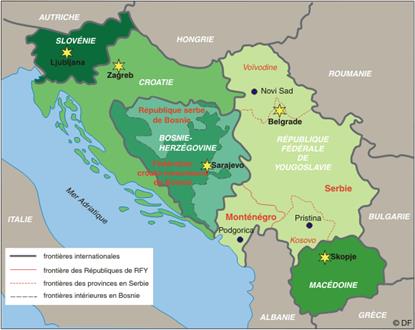
See: Yugoslavia stamps
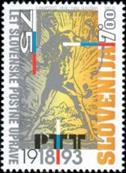
Scott: #167P
Issued: 19.3.1993
75th Anniversary, Slovenian Postal Service
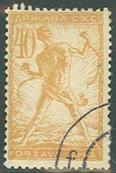 Inside
#167: Yugoslavia-Slovenia #3L8P
Inside
#167: Yugoslavia-Slovenia #3L8P
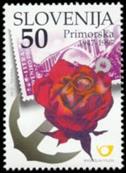
Scott: #306P
Issued: 9.9.1997
50th Anniversary, Reunification of Primorska
 Inside #306: Yugoslavia Zone B (Istria) #35O
Inside #306: Yugoslavia Zone B (Istria) #35O
http://placomuso.free.fr/croatie/Croatiaistra.htm
50th ANNIVERSARY OF THE REUNIFICATION
OF PRIMORSKA WITH THE HOMELAND
Slovenes
have been living uninterruptedly on the territory of the Slovene Littoral and
According
to the Peace Treaty of Rapallo, signed after World War I, the entire Slovene
Littoral and Istria were ceded to the
After
the annexation of this territory the Italian state began to carry out the
assimilation measures, which were intensified when the fascists came to power.
They destroyed most of the Slovene economy and banking, abolished Slovene
cultural and other associations and Slovene schools. The Slovene language was
banned not only in offices but also in churches. The organisation
TIGR (
The
general resistance of the Primorska Slovenes in
Nevertheless,
the wishes and demands did not come true completely. On 16th December 1947,
when the peace treaty with
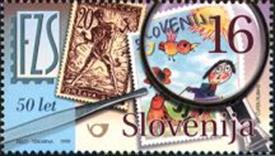
Scott: #346P
Issued: 23.3.1999
50th Anniversary, Slovenian Philatelic Association
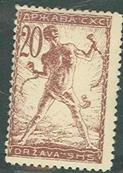 Inside #346: Yugoslavia-Slovenia #3L5P
Inside #346: Yugoslavia-Slovenia #3L5P
 Inside #346: Slovenia #305O
Inside #346: Slovenia #305O
50th Anniversary of the Slovenian Philatelic
Association
….Unfortunately,
there are no records about the first philatelists in Slovenia, but it is known
that as early as 1911 philatelists in Maribor started to gather round the
tables in inns to exchange stamps. The first registered association of
philatelists - called the Philatelic Club for
The idea
of establishing a Slovenian philatelic association began to be propagandized
among Slovenian philatelists soon after World War II. At that time in the then
With the
socio-political changes, the rules of the association changed accordingly to
"the letter of law". The basic tasks set out upon the establishment,
however, have remained the same until today. They are: to promote Slovenian
philately and to support its members with expertise, to promote stamp
collecting and development of philately in general and to promote the
educational role of philately, especially among young people. To achieve these
aims the Slovenian Philatelic Association organizes local and international
philatelic exhibitions, cooperates with foreign philatelic organizations and
international philatelic associations. By giving initiatives, expressing
opinions and putting forward suggestions for stamp issues and other related philatelic
items the Slovenian Philatelic Association also cooperates with Post of
Slovenia. Furthermore, by organizing discussions, expressing opinions and
publishing articles in philatelic magazines and other mass media, it takes care
of the professional development of philately.
The work
of the association is based on the activity of its members, which is voluntary.
It depends on individuals, who are prepared to devote their spare time not only
to creating their own collections but also to passing on their knowledge to the
others. This dissemination of knowledge may take various forms from clubs for
young philatelists to the organisation of meetings
and exhibitions, article writing and publishing of philatelic literature. After
the initial enthusiasm the interest in philately has slightly decreased, which
was also reflected in the work of the association. Some of the once very active
societies do not exist anymore today, others work with variable intensity.
Since the proclamation of independence of
![[Millennium Stamps, type IT]](Slovenia_image020.jpg)
![[Millennium Stamps, type IU]](Slovenia_image021.jpg)
![[Millennium Stamps, type IV]](Slovenia_image022.jpg)
![[Millennium Stamps, type IW]](Slovenia_image023.jpg)
Scott: #357-360P
Issued: 16.9.1999
Millennium Stamps

Inside #358: Pseudo Stamp on Envelope
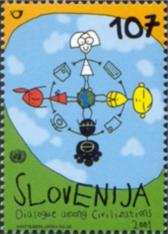
Scott: #470O
Issued: 9.10.2001
Dialogue among Civilizations
Inside #470: Pseudo Stamp on Envelope
Thanks to Lloyd Gilbert
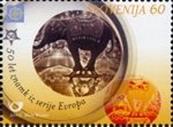
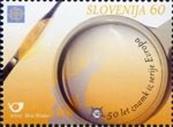
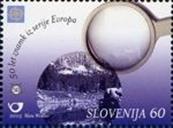
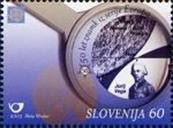
Scott: #602-5PP
Issued: 20.5.2005
50 Years of Europa Stamps
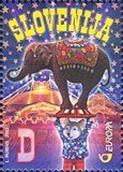 Inside
#602:
Inside
#602:
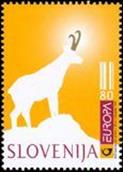 Inside
#603:
Inside
#603:
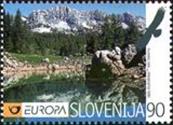 Inside
#604:
Inside
#604:
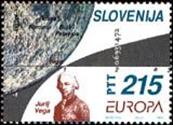 Inside
#605:
Inside
#605:
50th
Anniversary of the EUROPA Stamp Series
The first
EUROPA stamps with a common design depicting a tower formed by the 6 letters of
the word EUROPA were issued on 15 September 1956. They were issued by the six
countries which in March 1957 signed the Treaty of Rome establishing the
http://www.posta.si/Namizje.aspx?tabid=618&artikelid=8340

Scott: #605aP
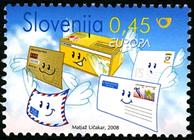
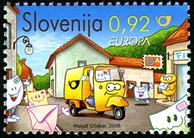
Scott: #753-4O
Issued: 29.5.2008
Europe – The Letter

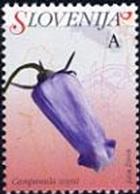 Inside
#753:
Inside
#753:
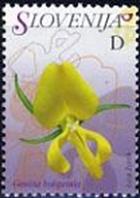 Inside #753:
Inside #753:

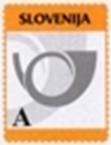 Inside #753: Postal card (21.1.2005), A nvi, post horn (changed color)O – Thanks to Lou
Inside #753: Postal card (21.1.2005), A nvi, post horn (changed color)O – Thanks to Lou
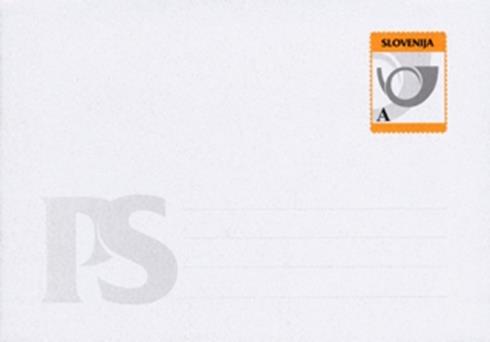
Inside #754: Pseudo
Stamps
Although
the word letter has multiple meanings, most of us think of a written piece of
paper, put into an envelope, submitted at the postal office to be sent to an
addressee; in case of letters, we are dealing with a special communication
between the sender and the addressee.
Communication
between individuals is one of the most basic factors of human cultural
development. Already centuries ago a need of the communication with the help of
mediators has appeared next to the direct communication, since it presented the
only way for individuals to connect in a larger area. The long distance
communication was accelerated by the invention of writing; the transfer of
written messages was already close to our conception of a letter. The first
letters were naturally different than the present form. The oldest found
letters were clay plates, written with cuneiform and inserted into special
wrappers from clay. In the period between 3000 and 1500 B.C., merchants and
other accidental carriers transported the letters from the royal court in
Mesopotamia to Capadocia (present
The development of postal services and the mass manufacturing and use of paper after 1500 brought changes also in the area of letters. The confidentiality of the letter content dictated their form. The initial letters, written on the sheet of paper, were simply sheets of papers, folded in various ways, while the final edges were glued together. In other cases, the folded piece of paper was tied together with a string or band, which had to be torn apart while opening the letter. Various ways of sealing the letters finally brought the conception of the envelope, which presents in most cases a secure way of protecting the message, submitted for the transfer in the public postal organization or private carrier. According to some researchers of postal history, the transition to the use of letter envelopes can be seen in the case of the Mulready's envelopes, which entered the circulation simultaneously with the black penny. This is also the form of the letter, as we know it today.
For
centuries the letters presented the most basic long distance communication;
however, in the years of the strong development of electronics and the use of
the World Wide Web, the letters have been slowly losing its value. However,
there is no fear that they would be lost entirely, since for a long time all
modern means of communication won't be available to all inhabitants; and above
all, the most modern media will never be able to replace the warmth of a
hand-written message on a letter paper.
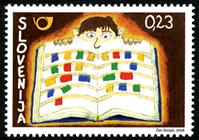
Scott: #756O
Issued: 29.9.2008
Stamp Day
Inside #756: Pseudo
Stamps

Scott: #778P
Issued: 27.3.2009
90 years of chainbreaker stamps
Inside #778: Vavpotič's
first draft of a
Postage due stamp, which was never printed
90 years of chainbreaker stamps
During the
last months of the First World War, the Slovenian national authority began to
develop together with the National Council for Slovenian provinces and
According
to the first drawings of Vavpotič, the motive of
a slave who is tearing apart chains was selected for definitive stamps. This
motive was also the reason for the famous name "chain breaker
stamps", which is familiar to collectors all over the world. Later on, Vavpotič regretted the selection of the commission by
claiming in a self-critical article, which was published in the journal Jutro in 1925, that the motive was daub.
Preparations
for printing the first stamps were ready already in November 1918, which is why
these stamps contain the inscription "Država
SHS" (State of
The stamp
indicates Vavpotič's first draft of a postage
due stamp, which was never printed.
http://www.posta.si/Namizje.aspx?tabid=880&artikelid=9412
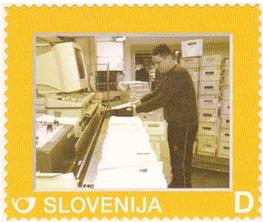
Scott: #???O
Issued: 27.11.2009
Letter sorting
machine
Inside #???: Stamps on envelope
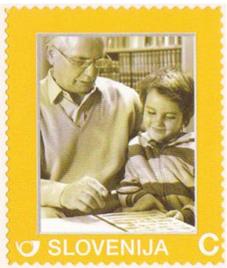
Scott: #???O
Issued: 27.11.2009
Grandfather &
grandson

Inside #???: Stamps collecting
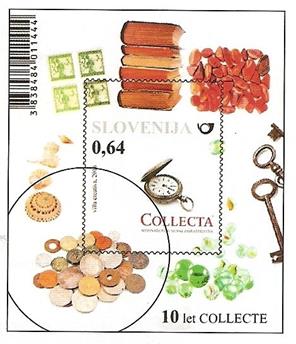
Scott: #1167O
Issued: 25.03.2016
Collecta
International Collectors Fair
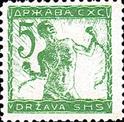 Inside #????: Yugoslavia-Slovenia
#3L2 (1919)P
Inside #????: Yugoslavia-Slovenia
#3L2 (1919)P
Thanks to Lou Guadagno

Scott: #????P
Issued: 09.11.2018
Stamp Centenary
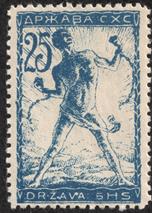 Inside #????: Yugoslavia-Slovenia
#3L6 (1919)P
Inside #????: Yugoslavia-Slovenia
#3L6 (1919)P
Lou
wrote: The autographed photo is of the "Chainbreaker"
designer, Ivan Vavpotic, who was a noted Slovene
painter and sculptor. The reproduced stamp is from a series issued on January
3, 1919, so technically, they were printed in 1918. I could not find any
definitive information, but it may be possible that Slovenia, like Russia, in
1918, was still using the Julian calendar, and so were 10 days behind the
Gregorian date.
Dragan
Buškulić wrote: Slovenia or Croatia or other countries of
ex-Yugoslavia except Serbia, never used the Julian calendar.
A series
of stamps "Chainbreaker" or originally
"Verigari" was printed on 3 occasions:
I 3-1-1919 lithography / perforation: 11
II 8-4-1919
typography / perf. 11 or 11 1/2
III
8-1919 typography perf. rouletted
Therefore
there are many differences in colors, perforations, types of numbers, etc.
This
series of stamps was in use on the territory of Slovenia, Croatia and
Bosnia-Herzegovina from 3-1-1919 to 28-11-1921
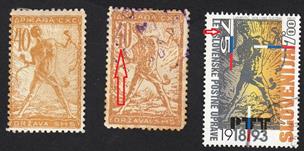
Scans of
the difference in the numbers
Thanks to Lou Guadagno and Dragan Buškulić
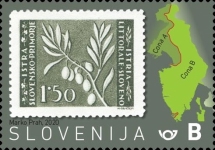
Scott: #????P
Issued: 13.07.2020
The 75th Anniversary
of the First Slovene Postage Stamps
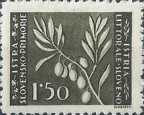 Inside #???: Yugoslavia Zone B (Istria and slovene Coast) #27P
Inside #???: Yugoslavia Zone B (Istria and slovene Coast) #27P
Thanks to Komlóssy Zoltán and Dragan
Buškulić
Best website related:
http://www.posta.si/index.aspx
http://www.posta.si/Namizje.aspx?tabid=385
http://www.euro-soft.nl/yuclub/
![]()
Wish List
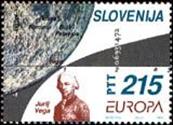
Slovenia #195O
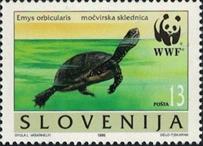
Slovenia #247a for Liberia, Guinea Bissau
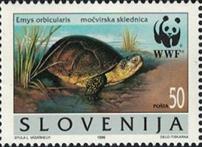
Slovenia #247b for Liberia, Guinea Bissau
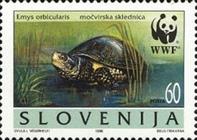
Slovenia #247c for Central Africa, Liberia, Guinea Bissau
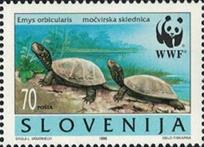
Slovenia #247d for Liberia, Guinea Bissau
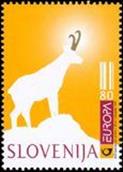
Slovenia #285

Slovenia #305
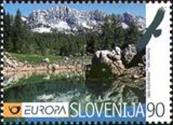
Slovenia #349
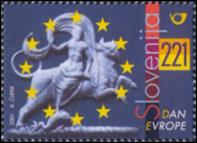
Slovenia #455 for Netherlands
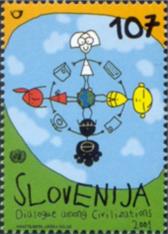
Scott: #470
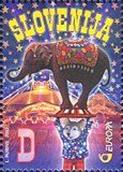
Slovenia #495O
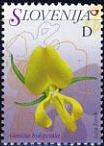
Slovenia #696
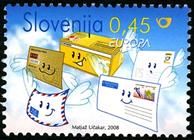
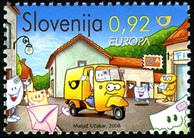
Scott: #753-4O
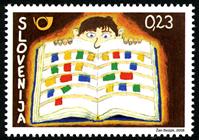
Scott: #756O
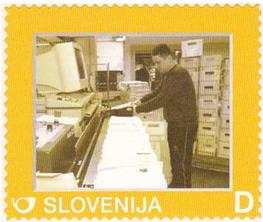
Scott: #???O
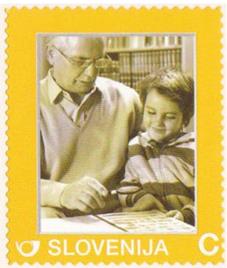
Scott: #???O
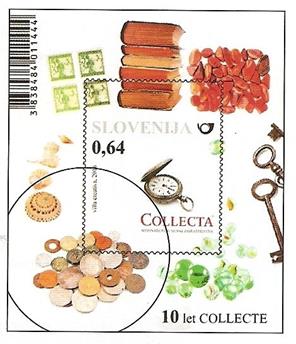
Scott: #1167
